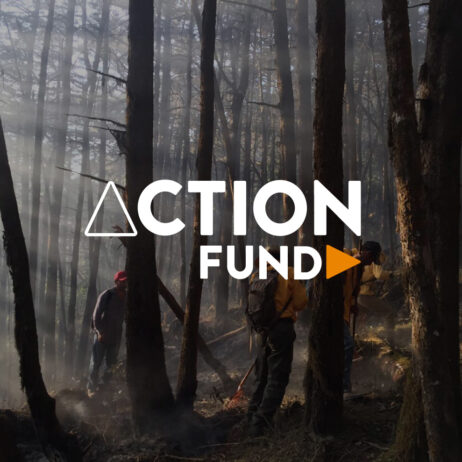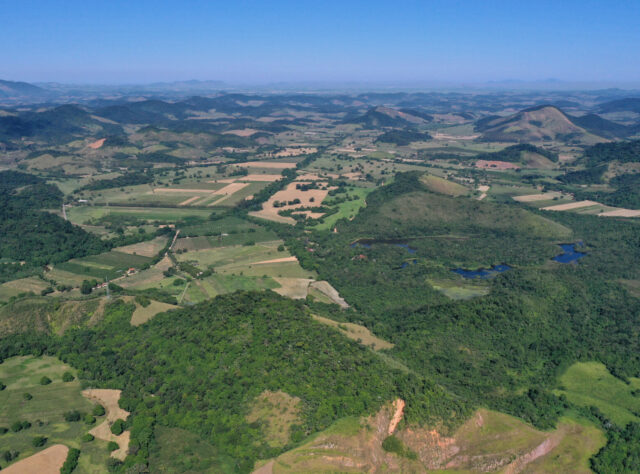
By Lee Dingain – UK representative for REGUA.
The Atlantic Forest is one of the world’s most depleted and threatened rainforests. Five centuries of destruction have left very few large continuous expanses of Atlantic Forest in existence today, and most of what does remain is highly fragmented.
Most of the Guapiaçu Ecological Reserve (REGUA) is situated on the lush forest-clad coastal slope of the Serra dos Órgãos mountains, which form the boundary of the upper Guapiaçu watershed. These steep mountain slopes proved too much for complete forest clearance, but the landscape of the valley floor could not be more of a contrast.

The steep forested slopes of the Serra dos Órgãos mountains bordering the Guapiaçu watershed form the heart of REGUA; a stark contrast to the largely treeless lowlands. ©Lee Dingain. Please click on the image for larger view
On a drive around the dusty dirt roads outside the reserve, it will soon become apparent that every exploitable patch of ground has been stripped of trees and replaced by agriculture and pasture. Atlantic Forest in the flat lowlands is now exceptionally rare.
But the lowlands around REGUA are not completely devoid of trees. Between the pasture, manioc fields and papaya plantations lie numerous small hills. While most have been reduced to grass covered slopes weathering by soil creep and gully erosion, there are some that still retain some tree cover. But these patches of trees are small, many are tiny. What biodiversity can such small forest fragments support? Are they worth saving?
At first glance these fragments appear to be of little ecological value. However, scientific research at REGUA, carried out by scientists and amateur naturalists alike, has proven time and again how important these forest fragments are, and why reconnecting them to larger forest blocks is crucial for the long-term survival of the biodiversity they support.
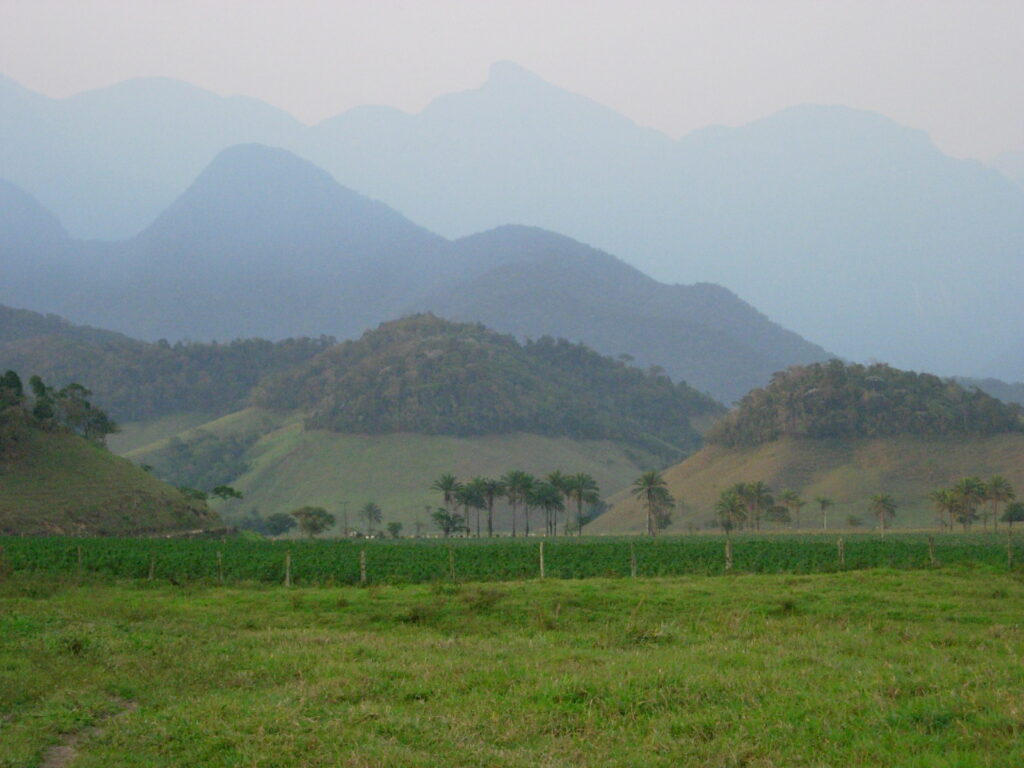
Some small isolated fragments of Atlantic Forest can be found on hills in the lowlands of the upper Guapiaçu valley. ©Rachel Walls.
Take one such forest remnant at REGUA, named after the former landowner, Onofre Cunha, but known affectionately as simply ‘The Fragment’. This 134 hectare patch of forest, a few minutes’ drive from the continuous forest forming most of the reserve, contains some large trees, but initially appeared too small and isolated to support many forest interior animals. Adjacent to a busy road and bisected by an vehicular access track, there was also easy access to hunters. But then local bird guide, Igor Camacho and student Mieko Kanegae, were walking along the access track during the night when they encountered a pair of Black-banded Owls. This surprising sighting prompting a surge of interest in exploring this fragment further.
Numerous subsequent night-time visits made by REGUA’s resident bird guide, Adilei Carvalho da Cunha, revealed a rich diversity of nocturnal birds living here, including seven species of owls. Species found include Tawny-browed Owl and Black-capped Screech-Owl, both found only in the Atlantic Forest. Birds of prey are indicator species, and this diversity of owls tells us that, although small and isolated, the ecology of this patch of forest is in relatively good health.
Most of the owls found at The Fragment are insectivorous, indicating a healthy invertebrate population, and daytime visits have indeed revealed that this small fragment supports a wealth of insect life. One group especially well represented are the Lepidoptera, the butterflies and moths.
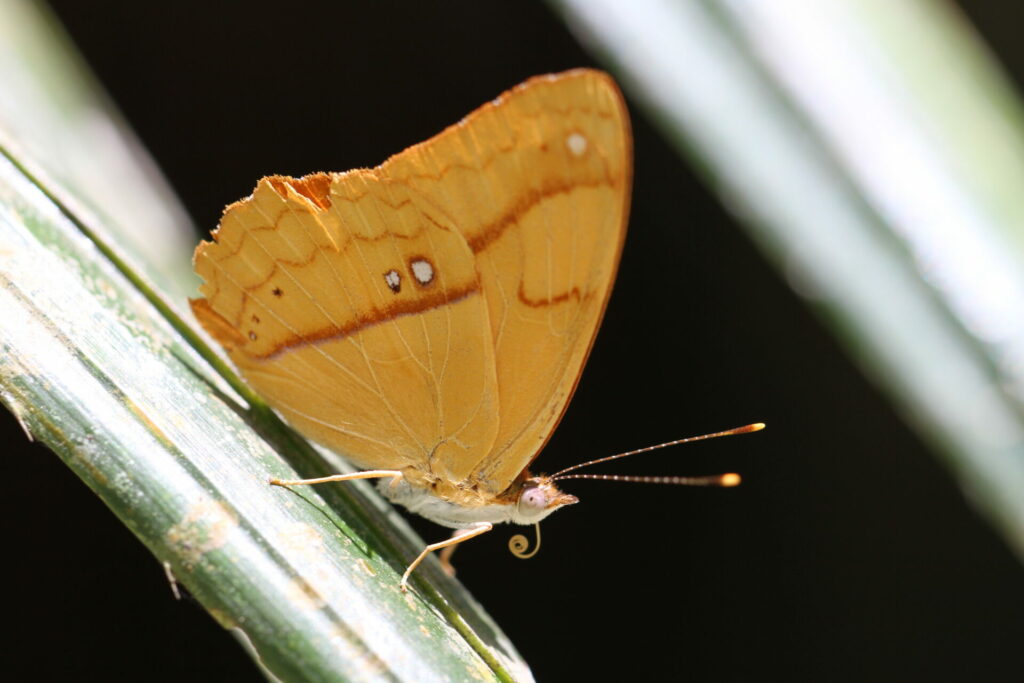
‘The Fragment’ at REGUA. although tiny has produced many butterflies which have been new species for the state of Rio de Janeiro, including this Little Banner (NIca flavilla flavilla) ©Lee Dingain.
REGUA Research Coordinator, Jorge Bizarro, has a passion for these insects and a vast knowledge of their ecology and lifecycles. Along with several amateur naturalists, Jorge has been recording and photographing butterflies at The Fragment for the last decade. The diversity of species they have found in this tiny patch of forest is astonishing, suggesting a wide variety of food plants are present.
Species associated with good quality forest, such as the metalmark Pirasca sagaris satnius, are present, and incredibly, many species new for the state of Rio de Janeiro have been also recorded here, such as the beautiful monotypic Little Banner (Nica flavilla flavilla).
Small isolated forest fragments appear to be particularly important for a range of insects. In 2011 Dutch entomologist, Tom Kompier, began an extensive study of the dragonflies and damselflies of the Guapiaçu watershed. He discovered the only known location in the Guapiaçu valley for the critically endangered damselfly, the Ivory-tailed Bluetip (Minagrion ribeiroi), in another tiny patch of trees near REGUA.

The critically endangered Ivory-tailed Bluetip (Minagrion ribeiroi) known in the Guapiacu valley from a single isolated forest fragment. © Tom Kompier.
More remarkable still, these fragments are even able to support species yet to be discovered. Seven months into his study, Tom was at The Fragment when he noticed an unfamiliar damselfly. Incredibly, this turned out to be a completely new species to science! Formally described by Ângelo Parise Pinto from the Federal University of Parana and Tom in 2018, this damselfly was named the Regua Pincertip (Forcepsioneura regua) in honour of REGUA’s work to conserve the Atlantic Forest.
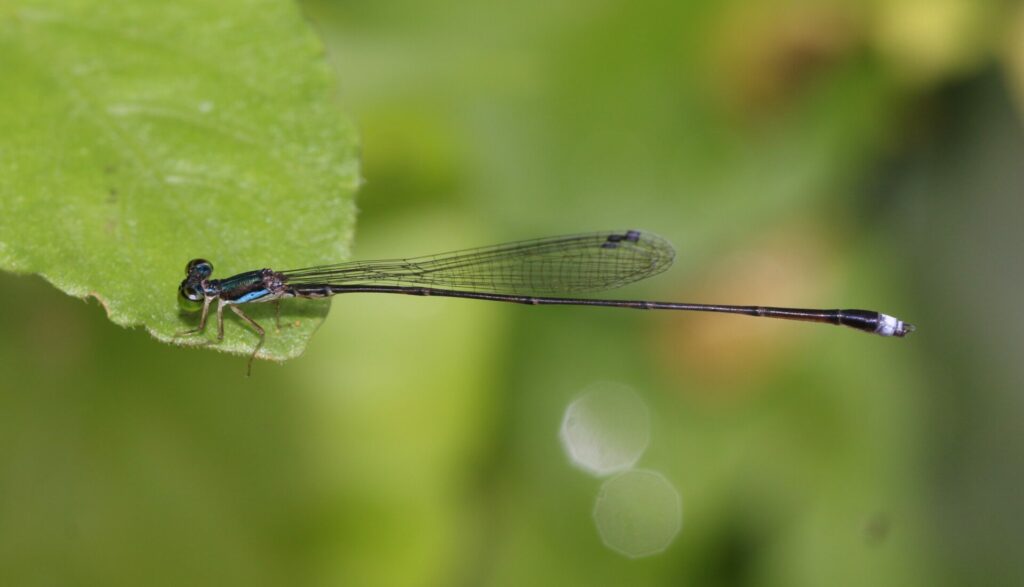
Regua Pincertip (Forcepsioneura regua) a recently described damselfly discovered at ‘The Fragment’, REGUA in 2015. © Tom Kompier.
The Regua Pincertip is a reminder that as habitat destruction continues, a great many species will disappear before they are discovered. But it is not enough simply to preserve these patches of forest as they are. If they remain isolated, over time the floral and faunal diversity they support will decline. Without fresh genetic input, these isolated ecological communities are vulnerable to disease, hunting and other threats. It is therefore vital that we save the few fragments of Atlantic Forest that remain, but also reconnect them.
The upper Guapiaçu valley is relatively fortunate in that it still has several forest fragments remaining, some quite extensive. With help from World Land Trust, the ambition is that REGUA will be able to purchase four priority areas of Atlantic Forest, totalling 112 hectares. This forest will then be protected by REGUA’s rangers, and the deforested land that these areas include replanted to reconnect the existing forest blocks. Only through the land purchase and protection can we ensure that the Atlantic Forest not only survives but thrives.

